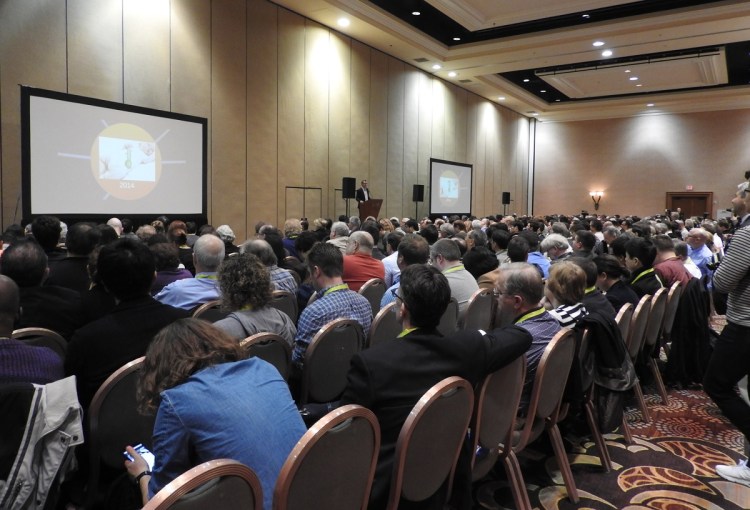The 2016 International Consumer Electronics Show kicked off, at least for the press, with an analysis of the trends that are driving the tech universe.
Shawn Dubravac, chief economist of the Consumer Technology Association, the trade group that puts on CES (held this week in Las Vegas), said that for the second year in a row gadget makers are focusing on what’s technologically meaningful, not just what is technologically possible. They are not just doing tech for tech’s sake; they’re giving more thought to how tech fits into our lives, he said.
The big trends this year include “ambient sensors,” aggregated learning, and the maturing of nascent technologies. This year, about 51 percent of revenue in the consumer electronics industry is coming from established categories like TVs, computers, smartphones, and tablets. In the future, these categories will account for less than half, as new tech categories like wearables, drones, robotics, and other categories take off.
Dubravac said that a decade ago we were using motion-sensing accelerometers to sense air bag deployments. Now the accelerometer is built into every smartphone. You can now use motion sensors to monitor your baby, for example.
“We have switched to an array of sensors that are continuously monitoring,” Dubravac said.
There are now smart dishwashers from Whirlpool and other appliance makers that fit in with the larger environment of the Internet-connected kitchen.
“You empower environments, setting a dishwasher to run at a time when the energy costs are lower or when you are away from home,” he explained.
The “ambient sensors” in our lives will monitor our responses to content. Your TV, smartphone, and other devices will gather feedback, via their sensors, on how you are responding while using gadgets.
“These technologies will impact every single job out there, every one of us,” he predicted.
As for aggregated learning, Dubravac said that the data being collected can now be used to customize solutions for each person. It’s like how Netflix predicts what movies you will like based on what you’ve rated in the past.
“We are constantly recording this information,” Dubravac said. “We’ll also see how quickly technology advances when information is shared.”
Google’s self-driving fleet of cars, which are currently being tested, have already driven 1.6 million kilometers.
“That’s more than any of us will drive on our own,” Dubravac pointed out. “When it comes across a hazard, the self-driving car will recognize that, all because it is sharing information across a whole fleet.”
Still, change will take time. He estimates a million self-driving cars a year will be sold by the year 2030, but that’s a long gestation.
Dubravac said the third big trend, the birth of nascent tech, includes things like virtual reality, noting that there’s now a whole ecosystem of content, hardware, and other categories that are driving it forward now.
“I see the potential for it as an immersive experience,” he said. “The implications for commercial technology are quite pronounced.”
He explained that, for instance, we’ll never book a trip on a cruise ship without first seeing what it’s like to visit the pool or walk through the corridors.
Wearables are another category that’s emerging from nascent growth into a real business, according to Dubravac. About 5 million are expected to sell this year. They’ll be joined by drones, which are expected to sell 2.9 million units this year. 3D printing is another new category, with 1,000 schools currently using them.
“It’s another 10 to 15 years before we see the full impact of it,” he said.
Dubravac also noted that smart homes have become a $1.2 billion market, and will be another driver of the overall tech market.
VentureBeat's mission is to be a digital town square for technical decision-makers to gain knowledge about transformative enterprise technology and transact. Learn More


